Gaming | July 18, 2023
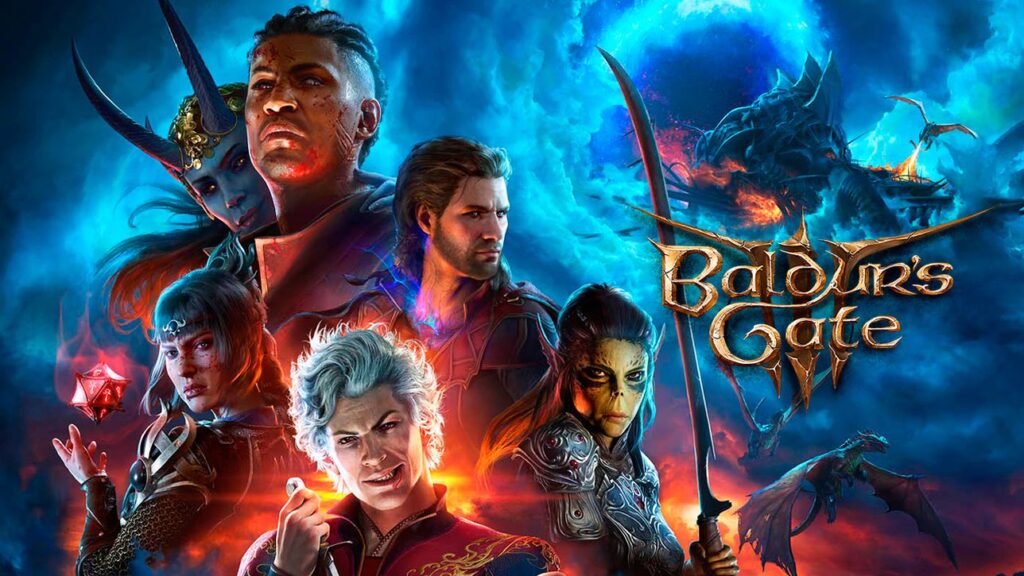
Baldur’s Gate 3 is like a kind of onion: it is composed of overlapping layers. The complexity is such that the variables seem endless, as they trace paths that fork in different directions, shaping the world and events that unfold on the Sword Coast.
Swen Vincke, the director, told us that the game is filled with secrets everywhere, in every nook and cranny of the setting, to the point where even he is surprised when he discovers them. The developers introduce content that other team members uncover while playing, unaware that it even existed. We asked how they ensure that all those missions and secrets fit into the immense puzzle that the game is. According to him, each element goes through the appropriate review process before being included in the game.
After enjoying the early access, we at MeriStation had the opportunity to try a version close to the release on both PC and PS5. The purpose of this article is not to list the features one by one, but to give readers a general sense, perhaps in broad strokes, as these few hours do not provide a complete overview that does justice to Baldur’s Gate 3. What has become clear is that we are facing one of the clear contenders for Game of the Year. The time has come to embark on the adventure!
The mind flayer has implanted its parasite inside the protagonist. Slowly, it takes control of the body and the consciousness. This is how the story of Baldur’s Gate 3 begins, taking players on an epic journey in search of a cure for this seemingly irreversible curse. During the journey, the character will decide whether to embrace the special abilities of their condition or reject the power that lies within their being.
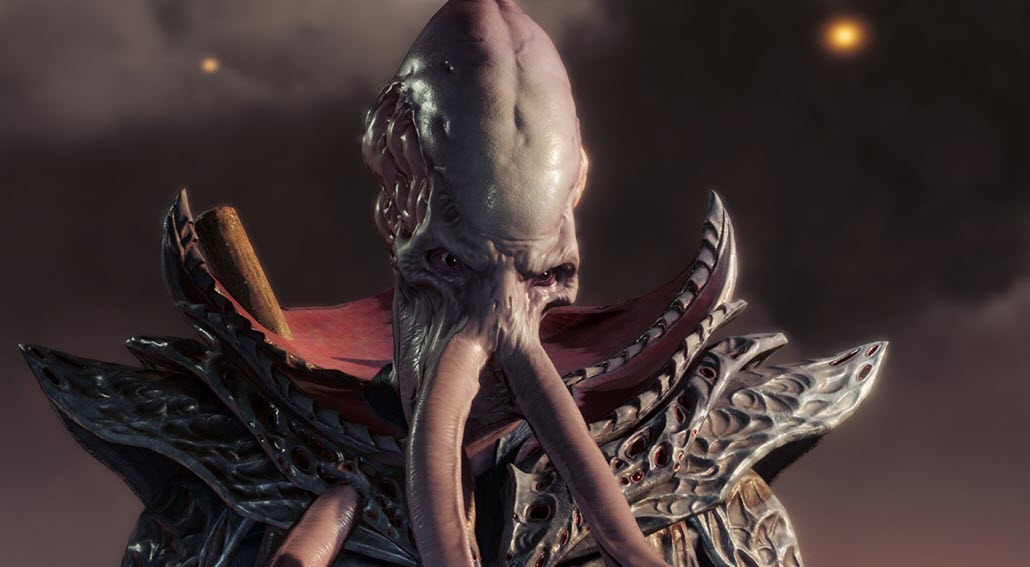
The premise quickly unfolds and builds a rich and deep story, supported by meticulously crafted characters. No mission is neglected, every detail is carefully measured. Six years of development and craftsmanship have resulted in a masterful and overwhelming work that needs to be savored slowly, with time and tranquility.
Larian’s work is overwhelming, the numbers speak for themselves: 7 playable characters, 11 races, 31 subraces, 12 classes, 46 subclasses, and over 600 spells. You can create a protagonist from scratch or choose one of the main characters with their own backstory. If you choose to create your own character (using a complete and feature-rich editor), you have the option to recruit and have romances with the main characters. As a quick option, there is the possibility to generate a random character.
The editor has been redesigned compared to the early access version, so new options are included to delight players.
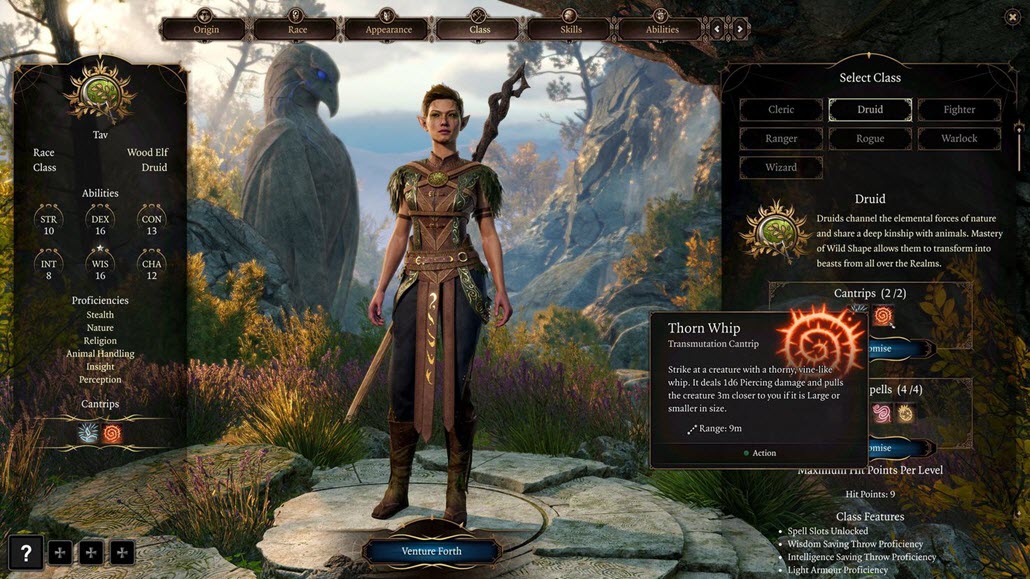
One of the new features in the release version is an origin character, The Dark Hunger, a dracolich that is fully customizable in terms of class, appearance, race, gender, etc. It has lost its memory and forgotten its past as a serial killer, a nature that resides in its subconscious and is reflected in dialogue options.
Those who choose to embody The Dark Hunger should know that they are playing as a brutal and bloodthirsty character, capable of killing in the blink of an eye, sometimes unconsciously.
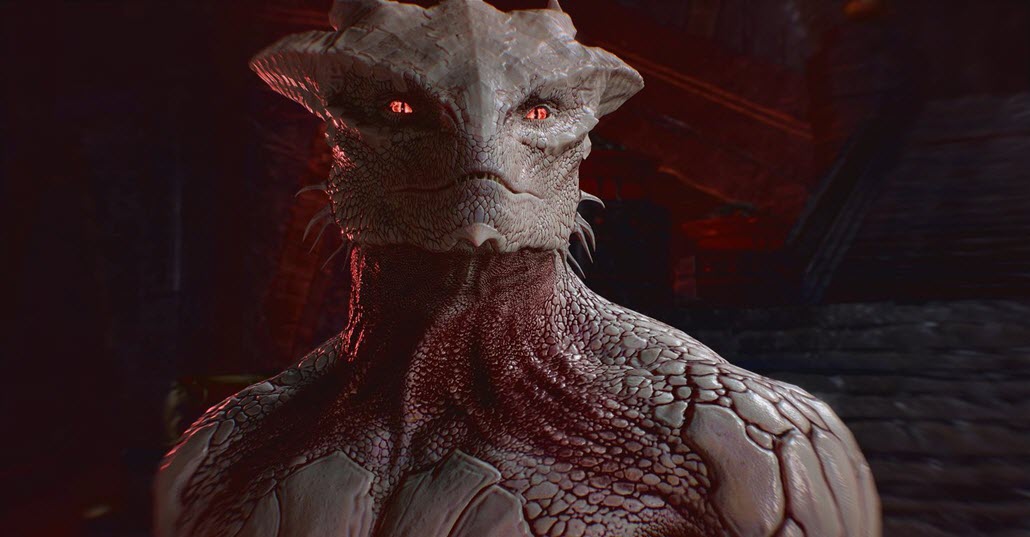
This is an immense game, not only in terms of its world, which is not open but extensive, but also because the adventure constantly changes and adapts to the player’s decisions and actions, causing a single event to branch off in different directions. Therefore, each playthrough is different, as a chain of events can be triggered based on whether a certain NPC has survived or if they have interacted with the group in a particular way. If you rescue someone, you may encounter them later on. If you leave them to their fate, they may be executed shortly after.
The solution to achieve the same goal is not unique either. For example, during the presentation, Vincke shows a bank heist that the player’s group carries out to rob the contents of the vault. The range of possibilities opens up for the player, who must think of a viable strategy. Entering through the main door and causing havoc around may not be the best idea, especially when the bank is guarded by heavily armed guards.
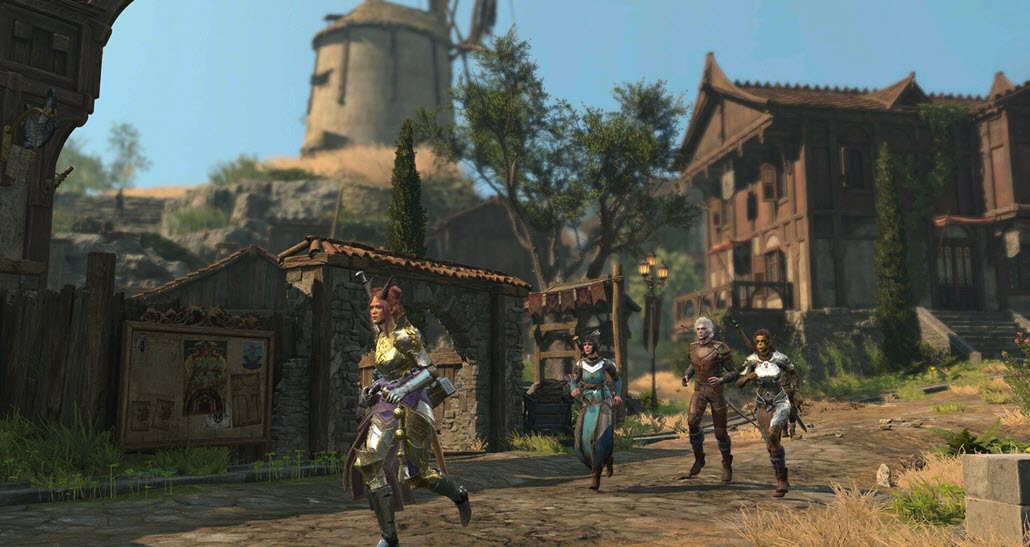
The plan he outlines perfectly illustrates the complexity of Baldur’s Gate 3. Several systems converge simultaneously, and when they collide, unexpected reactions occur. Not only is it a highly systemic game, but it also utilizes the horizontal and vertical elements of the environments to develop its gameplay. The developer chooses to separate the group and selects the wizard, who thanks to a spell flies to the rooftop of the bank.
The wizard could turn into a rat and slip through a hole in the wall, but instead, they transform into gas and infiltrate the interior of the building. Since the door is securely closed, they have no choice but to use magic to open it, but the problem is that this option creates some noise, which may alert the enemies to their presence. Just in case, the wizard casts an enchantment and creates several illusory images of themselves to prevent the guards from accurately attacking them if discovered.
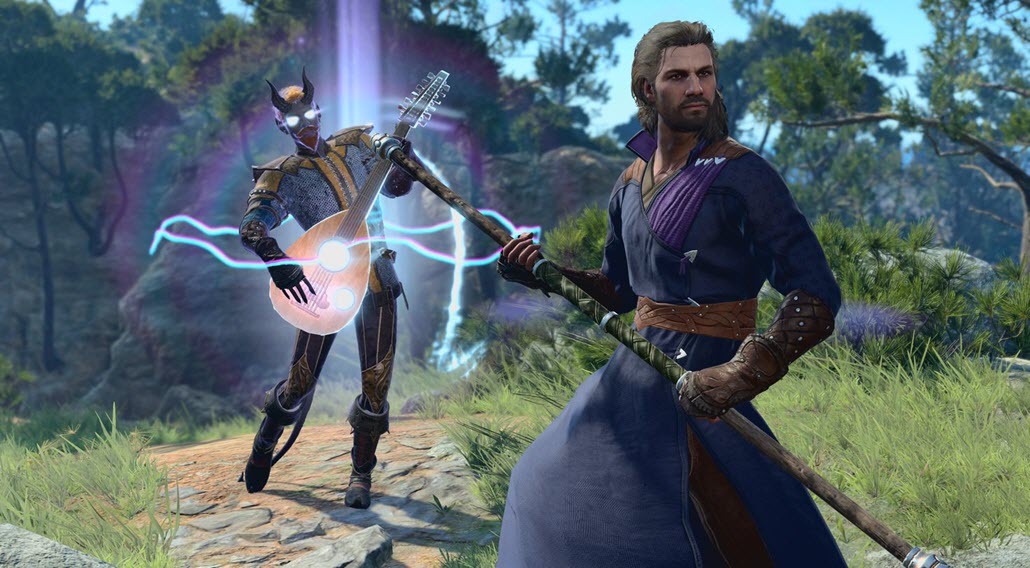
First, you need to obtain the code for the vault, which is found in a book in a nearby room. Vincke had planned to attract the soldiers to a single point, but when the alarm sounds, several systems come into play, and chaos ensues. In other words, the plan falls apart, and it’s time to think of other options. In a desperate attempt to salvage the situation, Vincke orders other members of the group to head to the main door to distract the guards. Surprisingly, in the state of alarm, the doors have opened, allowing the mage to enter the vault by stepping on the floor tiles according to the obtained code. When written like this, it may seem that the task was more or less straightforward, but the director had his fair share of struggles… once again, as it has become a meme that things don’t go according to plan and rehearsal.
In another mission in the second act, which is also not available in the early access version, the companions have to come up with a method to enter the city of Baldur’s Gate. Engaging in combat is suicide, so they opt for the option of surrender. Once in the city’s prison, they escape, and voilà, victory, mission accomplished. In another moment, the character exposes a fair genie who was cheating with the fortune wheel. In response, the cunning character turns us into cheese, rolling along the path and emitting a strong aroma as an ability. These are just a few examples of what one can find in this third installment, an endless array of possibilities and situations.
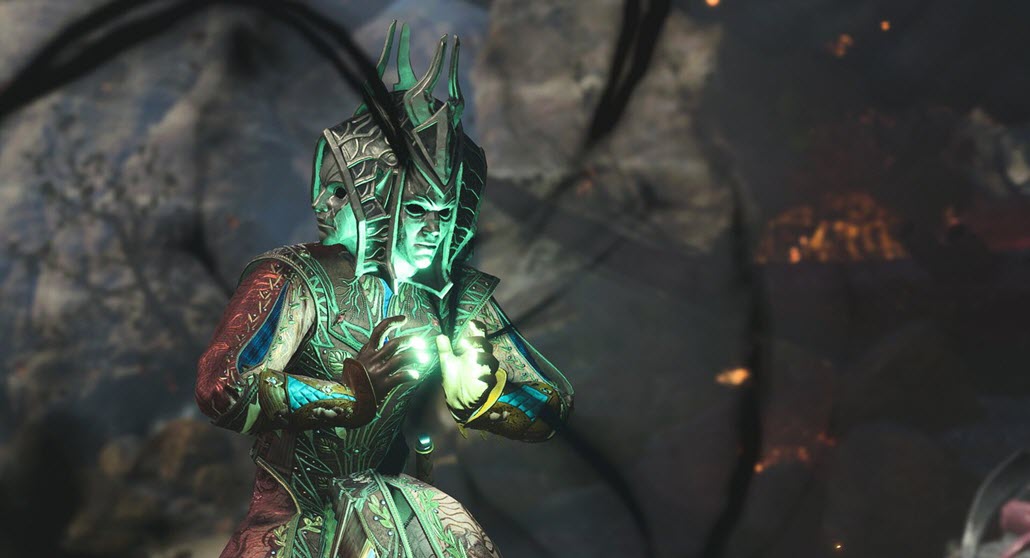
While battles are one of the main focuses of the game, conversations form another crucial aspect. The options that unfold before the player provide nuanced responses, some of which are only accessible based on the character’s class or specific attributes. For example, if we use persuasion, we have to roll the dice and get a number equal to or higher than what is shown on the screen. Certain bonuses can be added to increase the chances of success. According to the studio, it is possible to avoid most boss battles if the cards are played right. Vincke also adds that one sequence has up to 20 different versions, which gives a fairly accurate idea of the colossal narrative work that has been carried out (along with other aspects of the game).
Larian Studios, true to its philosophy, doesn’t take players for fools. Instead of simplifying gameplay and the story, they prefer to provide the necessary tools for each player to enjoy their own experience in their own way. The game implements three difficulty modes (explorer, balanced, and tactical), which correspond to the classic easy, normal, and hard modes. The difference lies in aspects such as the enemy’s power and the group’s vitality, but they also implement changes in AI, as confirmed by a developer from the studio. They have explained that in the future, they plan to introduce a customizable difficulty mode, although it won’t be ready for release. Nonetheless, it is possible to switch between difficulty modes at any time during the game. It is worth noting that the game also includes many accessibility options.
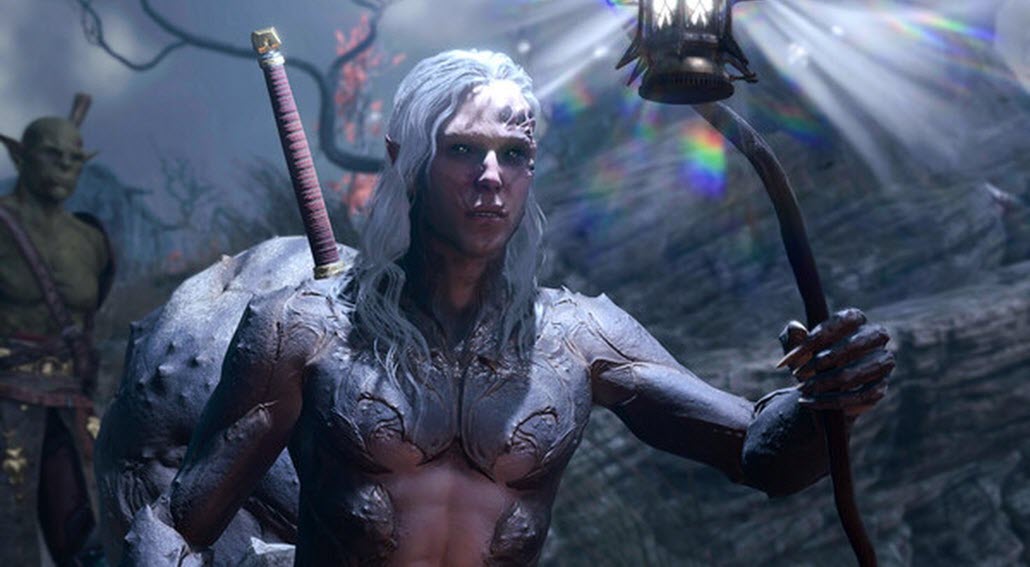
For those who have played the early access version of Baldur’s Gate 3, they know that the combat system is based on the rules of D&D 5e. It is a turn-based game that limits the movement of characters and the number of abilities they can perform in a single turn. Actions such as jumping or moving faster, casting spells, physical attacks, and much more overlap on the battlefield. Additionally, the design of the area is crucial, so it must be taken into account when strategizing. If flammable oil is detected on the ground, it can be used to your advantage, but be careful, as the enemy will also be aware and won’t hesitate to set you on fire in the blink of an eye. You must seek cover from archers, move stealthily against enemies from behind, and find their weak points. Sometimes, when receiving an attack, you can react and counterattack.
We asked the developers if there would be an automatic level-up system for players who don’t want to overthink it, but although the team has considered it, for now, they prefer that each player chooses attributes, spells, and actions manually. The number of enchantments is overwhelming, but Larian has implemented a quick search tool.
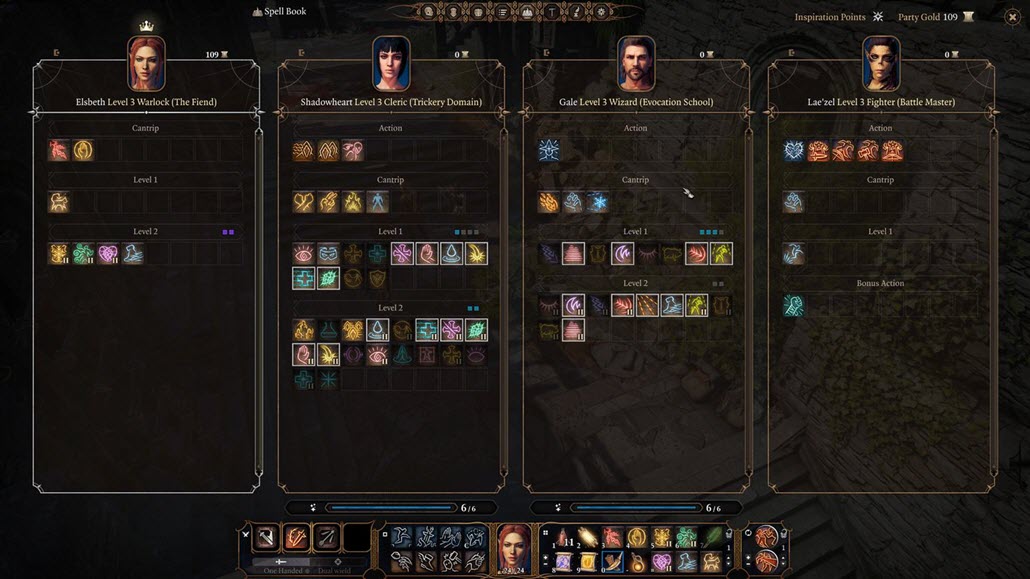
The adaptation to PlayStation 5 will take a few weeks longer than expected, as the studio is optimizing the game. However, the developers have allowed us to pick up the controller and take a look at Baldur’s Gate 3 on the Sony machine. It’s striking that the interface is much cleaner, but what really surprises (actually, not so much, as Divinity: Original Sin 2 was fantastic in that regard) is how well the controls adapt.
Camera and character movement are handled with the sticks, while the spell and ability menus open comfortably using the triggers, through clear and easy-to-use radial menus. However, the current build doesn’t take advantage of the DualSense capabilities, and Vincke has not revealed any details about it. On the other hand, the controller can be connected to the PC version and played in the same way as on the console.
We had the impression that the game looks slightly worse on PS5 compared to PC, although it is a build that is not yet final.
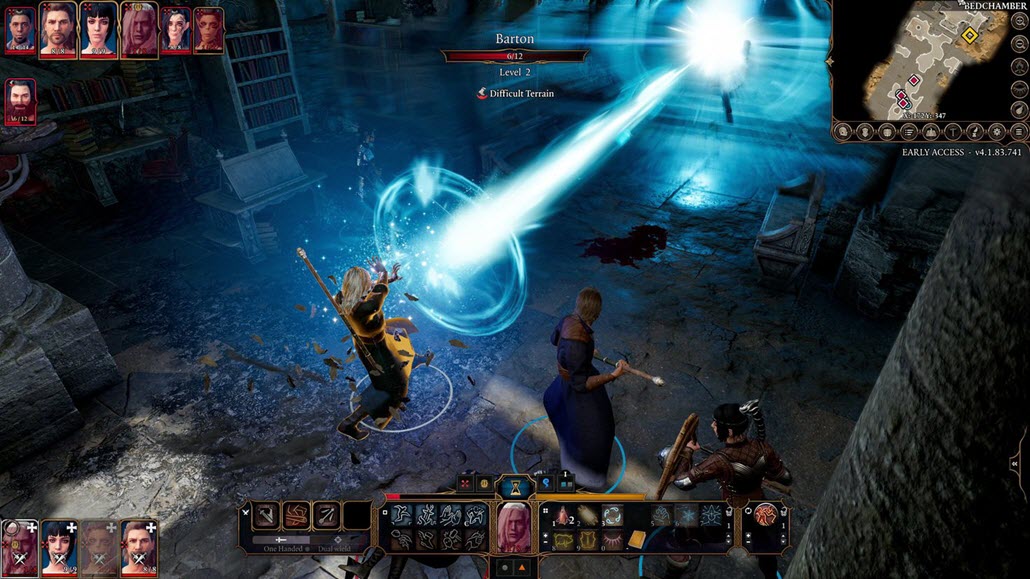
Baldur’s Gate 3 captures the essence of Dungeons & Dragons with mastery. It is visceral, bloody, and combines serious storylines with humorousand ironic narrative threads, at times dark and at times lighter, all together forming a wonderful epic fantasy story. The return of classic characters like Jaheira or Minsc, the nods to the previous installments, and the secrets await you, player.
It will be released on August 3rd on PC; the PS5 version will not be ready until September 6th. And what about the Xbox Series X/S version? It is not ruled out, despite running into some issues.